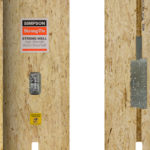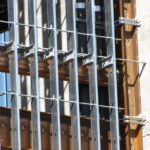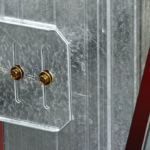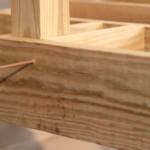
While the title of this blog post might remind you of the tasty turkey dinner you enjoyed on Thanksgiving, it’s actually a question regarding a shear wall component’s effect on performance. What type of fastener do you use to attach wood structural panel sheathing to cold-formed steel (CFS) framing, and what is the effect on a shear wall assembly?
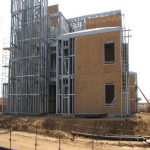
Structural sheathing is most commonly attached to CFS framing with self-piercing or self-drilling tapping screws, power driven pins, and adhesives.
The AISI North American Standard for Cold-Formed Steel Framing – Lateral Design standard (S213) specifies using either #8 or #10 self-tapping screws (depending on the assembly) that comply with ASTM C1513, and have a minimum head diameter of 0.285” or 0.333”, respectively.
It’s worth noting that you cannot verify ASTM C1513 compliance by simple inspection. While screw dimensions are easy to measure, other features such as hardness, ductility, torsional strength, drill drive, and thread tapping cannot be evaluated in the field or by visual inspection. It’s prudent that a Designer and jurisdiction expect a screw manufacturer to validate its product’s compliance with ASTM C1513. This can be done through test reports by an accredited test lab and evaluation data, or by an evaluation report published by an ANSI-accredited product certification entity such as ICC-ES or IAPMO UES.
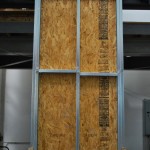
In early 2012, Simpson Strong-Tie performed full-scale CUREE cyclic testing at our Tyrell Gilb Research Lab on 4-foot wide by 8-foot tall 7/16” thick wood structural panel sheathed CFS framed shear wall assemblies.
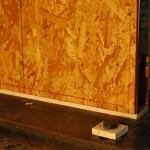
The two primary shear wall configurations included a low and high shear strength assembly using #8 and #10 sheathing panel edge screws at 6” on center and 2” on center into 33 mil (20 ga) framing and 54 mil (16 ga) framing, respectively, both with field screws at 12” on center.
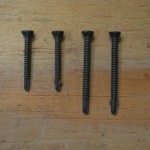
Then tests were performed on each configuration with one set of walls using winged self-drilling tapping sheathing screws and another set using non-winged self-drilling tapping sheathing screws.
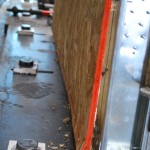
While the peak loads were within 5% to 10%, the assemblies with the winged tipped screws were less stiff compared to the non-winged tipped screws. This resulted in an approximate 20% reduction in shear wall assembly design strength. This may be due to the wings creating a larger hole in the wood structural panel sheathing.
What structural sheathing and what sheathing fasteners have you used for CFS framed shear walls? Let us know by posting a comment.
What are your thoughts? Visit the blog and leave a comment!


